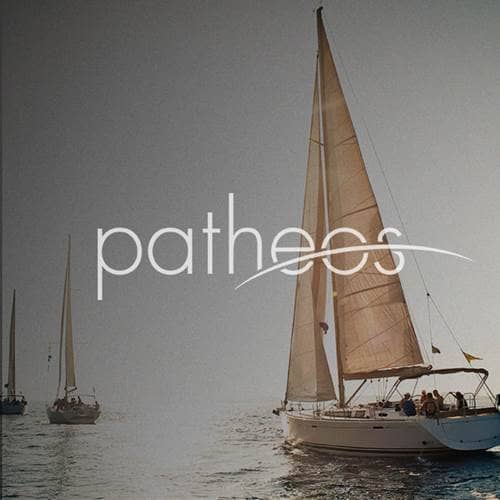- Trending:
- Pope Leo Xiv
- |
- Israel
- |
- Trump
- |
- Social Justice
- |
- Peace
- |
- Love

RELIGION LIBRARY
New Age
Historical Perspectives
The New Age tradition represents a special challenge for scholars of religion, since it lacks central organizations, leadership, texts, and even tenets. Most researchers of the New Age movement therefore resort to describing it, rather than defining it. Wouter J. Hanegraaff's New Age Religion and Western Culture: Esotericism in the Mirror of Secular Thought (1998) has become a classic in the study of the New Age. In this text, Hanegraaff describes the New Age as a movement born in the late 1970s, in the United States and western Europe, which transcends specific organizations and sects, and is aware of itself as a movement. Such an approach allows Hanegraaff to include a wide variety of New Age materials in his study without needing to formulate a single definition of what belongs within the category.
Similarly, James R. Lewis and J. Gordon Melton begin their anthology Perspectives on the New Age (1992) with a frank discussion of the problem of boundary issues. In this text, Lewis introduces the notion of using a "family resemblance model" (a concept drawn from the work of philosopher Ludwig Wittgenstein) to describe the New Age, a model wherein members of the New Age subculture share certain traits with each other as a whole. Though Lewis does not finalize the set of New Age characteristics, he offers several possibilities, as drawn from the work of other scholars. These include such attributes as healing, eclecticism, optimism, psychic powers, and a desire to be modern. In the same volume, J. Gordon Melton envisions the New Age as a religious movement characterized by two central characteristics, that of social and individual transformation. Since a great many religions fit within that schema, Melton specifies a variety of specific historical roots as well. From even this precursory analysis, it is clear that defining the New Age is nearly impossible. Given the diffuse nature of the New Age movement, describing its attributes offers far more value than a rigid definition.
Beyond definition or descriptive questions, scholars have generally focused their analysis on understanding why the New Age emerged in the 1970s, and what it represents. Wouter J. Hanegraaff, working from a transatlantic perspective, has offered a fresh look at the New Age. He argues that the New Age movement fundamentally represents a new form of esotericism that criticizes what is generally considered the cultural and religious mainstream, namely the modern, scientific Christian western world. This approach has much to offer. The most fundamental overarching characteristic of the New Age is that it is not the Old Age. That is, the New Age envisions itself as a break from all that came before the 1970s. Hanegraaff's approach posits the New Age as a quintessentially postmodern movement, meaning that it attempts to move beyond the modern world's fixation with the rational, scientific, and technological (on the one hand), and the Christian mainstream (on the other hand). Many of the New Age's theological hallmarks, such as mysticism, impersonal theology, and reincarnation, represent a rejection of such features of the western world.
Another school of thought focuses on the New Age as the continuation of an existent tradition rather than a radically new break. J. Gordon Melton offers such a vision of the New Age. For Melton, the movement represents the continuation of an older metaphysical tradition, namely the 19th-century new religions such as Spiritualism, Theosophy, and New Thought. Melton argues that not only did these movements feed into the New Age, but that proponents of many of these religious traditions simply renamed their practices as New Age and continued in the same vein, though he also notes that others, namely the well-institutionalized New Thought denominations, rejected such a transition. Melton's argument has much to support it. The historical record is clear that the 19th-century metaphysical traditions did influence the New Age.
Catherine L. Albanese's A Republic of Mind and Spirit: A Cultural History of American Metaphysical Religion (2007) makes a very similar claim. Albanese argues that the New Age represents only the newest form of a long tradition of metaphysical religion in America, one with roots in the colonial experience. This tradition exists alongside a broad Christian tradition, and together the two represent the core of American religious life. For Albanese, what makes the new age new is merely a decision to "reify" what was already an established undercurrent in America and transform it into a movement. Like Melton's approach, Albanese's vision of a longstanding antecedent tradition to the New Age has much to recommend it. David D. Hall has documented that even the paragons of American Protestantism, the New England Puritans, exhibited occult beliefs such as dowsing and omen reading that today would mark them as part of the New Age tradition. The New Age stretches far back into American history.
In fact, both the "new New Age" approach of Haanegraaf and the "old New Age" thesis of Melton and Albanese are correct. The New Age possesses a rich prehistory before the 1970s, and it inherited many of its central features from the 19th-century metaphysical religions of New Thought, Spiritualism, and Theosophy. Those religions in turn drew from a longer tradition of occult, esoteric, and metaphysical traditions before them. Yet the 1970s also represented something very new. The New Age responded to a new set of factors that did not exist before then: a rapidly shrinking world, the spread of science and technology into nearly every sector of life, and the mix of world religions in the streets of American suburbia. One can understand the New Age as both new and old at the same time.
Study Questions:
1. Why is the New Age movement described more often than defined?
2. How does James R. Lewis describe the New Age movement? J. Gordon Melton?
3. Describe the role of the New Age movement within Western colonialism.










